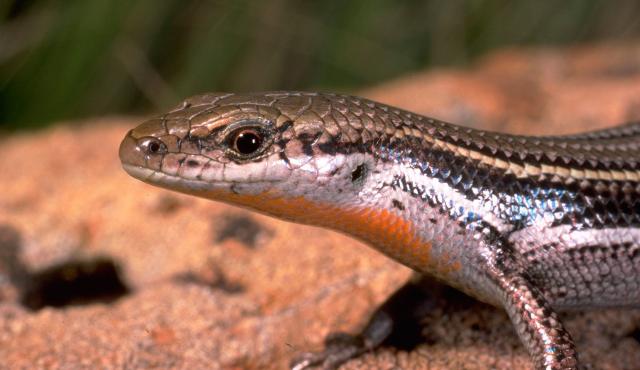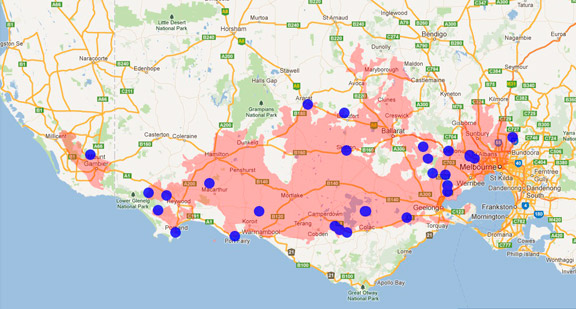A range of teacher professional learning programs will be developed to accompany the Biodiversity of the Western Volcanic Plains online outreach...

Eastern Three-lined Skink
Acritoscincus duperreyi
Oviparous (egg laying). Females lay clutches of 3 to 9 eggs in early summer under rocks or logs exposed to high levels of solar radiation. Sex of hatchlings is influenced by thermal regimes during incubation. Eggs incubated at less than 20°C produce predominantly male hatchlings.
| Details | Description |
| Type | Reptile |
| Group | Lizard |
| Former Scientific Name | Bassiana duperreyi |
| Other Common Names | Bold-striped Cool Skink |
| Identifying Characteristics | |
| Distinctive Markings | Clearly defined pattern of stripes running lengthways. |
| Diet | Carnivore. Insects and other small invertebrates. |
| Habitat | Shelters amongst tussock grass |
| Native Status | Native to Australia |
| Taxonomy | |
| Phylum | Chordata |
| Class | Reptilia |
| Order | Squamata |
| Family | Scincidae |
| Genus | Acritoscincus |
| Species | duperreyi |

Distribution maps indicate current and historic locations where species have been sighted.
Source: Atlas of Living Australia
| Conservation Status | |
| DEPI Advisory List | Not listed |
| FFG Act | Not listed |
| EPBC Act | Not listed |
The conservation status of species is listed within Victoria and Australia.
The Department of Environment and Primary Industry (DEPI) Advisory List consists of non-statutory advisory lists of rare or threatened flora and fauna within Victoria.
The Flora and Fauna Guarantee Act 1988 (FFG Act) lists threatened species in Victoria. Under the Act, an Action Statement is produced for each listed species.
The Environment Protection and Biodiversity Conservation Act 1999 (EPBC Act) is the Australian Government’s key piece of environmental legislation, listing nationally threatened native species and ecological communities.



